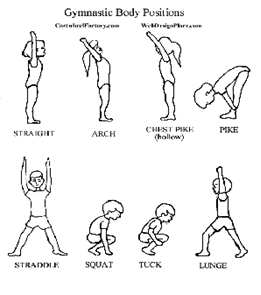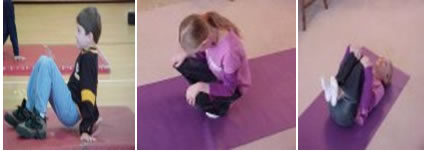|
SKILL PROGRESSIONS: A GAME PLAN
Written by:
Gerry Cernicky
Since being an editor for pelinks4u
at its inception, I realized the vital
need to look back and evaluate what
has happened from that auspicious beginning.
Similar to this month’s article,
it must be understood there should be
an essential requirement, which would
ensure future success. After all these
years, and with the help of a plethora
of editors who are hard-working, energetic,
creative, imaginative, enthusiastic,
and passionate, we have instigated a
professional future for veteran and
new teachers. Within that framework,
there had to be basic foundations that
would bring everything together.
The main cog was Steve
Jefferies , who set the program
in motion, and then found the building
blocks that have traversed many topics
relevant to structure and strength in
order to help other teachers, parents,
community, school boards, and legislators
to advocate for the importance of our
craft.
It is with that thought in mind that
I came up with the idea for this month’s
subject/project. Using a skill theme
approach, this article will delve into
ideas for a Game Plan, and
skill progression, that will serve as
a foundation for lead-up games
and activities. The end product of any
game or activity must have a foundation,
which is cemented by either rubrics,
a scope and sequence of skills, or a
curriculum mapping process. For every
game or lead-up activity to be successful,
it should be inherent with the opportunities
that are given to the students. They
will develop the skills according to
their abilities, and be given adequate
chances to be successful in a step-by-step
progression which will be the basis
of understanding and development of
any lead-up game.
In many instances, the original game
or activity will have variations and
modifications to make the game easier
to learn and participate in. Within
this article will be all the skills
necessary to explain the background
for the games and the activities that
follow. The skills will be listed, then
an example of the game will demonstrate
how the skills are significant to make
the game teachable and essential to
the overall success of the game or activity.
It must be noted that the resulting
modifications are changed to the students’
skill levels and are developmentally
appropriate. The skills will also be
broken down into concept objectives.
The scope and sequence are vital components,
and along with the content will demonstrate
the need for a well-developed plan.
Included are the following procedures
of skills, content, body, and space
awareness; locomotor and non-locomotor
skills; effort and relationships; balancing;
and object/mastery skills. The final
piece of the construction are the national
standards, which will serve as a guide
to help the project reach its completion
The Game Plan was briefly noted in
a previous article called MAKE
A U TURN, which discussed quality
P.E. including ways in which to make
your class great. This plan for skill
progressions is organized into invasion/territory,
striking and fielding, and target and
net wall activities. The main ingredients
of the plan revolve around the game
appreciation, decision making process,
skill execution, and lead-up game activities.
The level of student performance, using
grid games, combines a tactical approach,
respect for the rules, and the ability
to engage in activities so every child
can participate regardless of skill
level. This ensures there will me a
maximum of touches to motivate the students
to learn the skills through content
and practice after the game or activity
is played.
The skills then enhance performance
and participation to help implement
strategies, confidence, leadership,
and to face new challenges in practice,
which develops the ability to participate
at any level in real game situations.
This will invigorate the joy of just
playing, which will be more enjoyable
for those who don’t have a high
level of technical development. There
will be no complicated rules or distractions
to learn fundamentals. The ground floor
now has a foundation for all that will
follow to piece all the ingredients
into a successful venture. Included
in the progression are:
• Kicking and Dribbling
• Throwing and Catching
• Striking with racquets and paddles
• Long and short handled implements
• Rhythms
The best way to use this plan is to
understand that the skills will be arranged
in sequential order, and from there
the students will continue through the
skills in a progressive manner according
to their level of ability. The skills
are taught from the very basic to the
advanced levels. That is, they practice
the skills in order, then move to the
next level until that skill is mastered.
All of the learned skills will be utilized
in the game or activity. If the activity
appears to be difficult, the teacher
will stop the activity to either practice
the skill, or provide a variation or
modification, which will be adapted
by the size of the equipment, space,
time, and rules.
In games of high organization, it is
paramount to be engaged in small sided
game action. An example of the skill
progressions are included in a podcast
from the Talkshoe
website for episode #47 (02/18/2010
11:40 AM EST EPISODE47 - PE TALK-Skill
Progressions). Examples
of the skill progression sequence follow
a pattern of introduction of the skills,
then concepts are applied followed by
reinforcement of the skills. The skills
are aligned to the national standards
and can be adapted to meet the ability
levels of the students. These examples
can be accessed at the Skill Progression
link (episode 47), which will explore
the skills and lead-up game examples
in flag football, soccer/speedball,
hockey, basketball, volleyball, wiffleball,
and ultimate and educational gymnastics/tumbling
activities.
The skill progression link is geared
to grades K-middle school aged students.
Within each example, there is a myriad
of skills in sequential order with activities.
The skill theme approach is a vital
component to understand the importance
of progressing at a level that will
be a foundation for all skills:

In this lead up gymnastic sequence,
the body positions must be learned first
before the actual skills are attempted.
In the primary grades, a series of mimetics
is practiced to set up the tumbling
skills. The following progression shows
the necessary skills for a backward
roll:

The skill starts with a mimetic, called
a crab walk, which is followed by an
egg roll position, then finalized by
the backward roll position (tuck) which
was practiced through the gymnastic
positions. In each sequence, the students
are given alternatives such as the crab
walk, egg roll, shoulder roll, or a
candle, which is an inverted position
onto the back with legs thrust upwards.
With practice, the students proceed
through the scope and sequence of skills,
then move to the next level when they
are ready.
|



